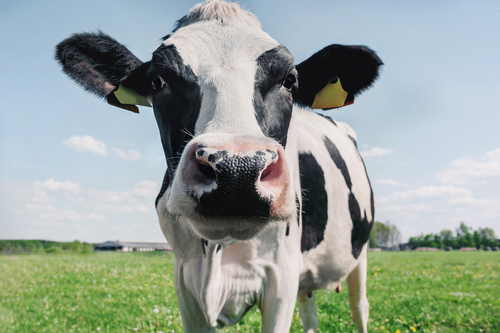Rav Orlofsky recently gave a shiur and presented a wonderful chiddush. He probed the question of why we eat dairy on Shavuot. His experiential answer is quite extraordinary. He explains that on this yom tov we become transformed through the Torah so that we have the ability to infuse kedusha into everything. Dairy foods on their own have no inherent kedusha, but that’s just the point. Our kedusha on this yom tov has the power to transform anything mundane into something holy.
Based on Rav Orlofsky’s chiddush, we can say with confidence that the experience at Har Sinai was transformative. There are five reasons to give how it was a transformative experience.
My first cousin, Rabbi Yakov Nagen (Genack), explains that the uniqueness of the Har Sinai experience was that God silenced all the noise in the world so that this experience would penetrate B’nei Yisrael’s conscience. Though the Torah is given every day, as the Zohar notes, this daily Torah comes with outside noise and issues plaguing us. But the Har Sinai experience was clear and penetrating with no outside distractions, thus magnifying its impact.
Rav May, Rosh Kollel of Yeshiva Gedolah of Passaic, offers another answer. Based on sources, he explains that Shavuot stands for Yitzchak as the shofar of Yitzchak was blown at Har Sinai. This shofar penetrated the hearts and minds of B’nei Yisrael and cleansed them of all sin. This is exactly why parshat Behar, which references Har Sinai, continues with shemittah and yovel, for it is at yovel that the shofar is blown to free all slaves, just as at Har Sinai B’nei Yisrael became free through the Torah. This answers Tosefos’s question on the Gemara that asks what’s the explanation of the hei hayediah by the words “Yom Hashishi.” The Gemara answers that this is referring to the sixth day of Sivan, to mean that it is for that day that creation was undertaken, to accept the Torah, but if not for that day and the acceptance of Torah the world would cease to exist. Tosefos asks that in fact the Torah was given on the seventh of Sivan, so how can the sixth of Sivan be referenced? Rabbi May now answers that it’s on the sixth of Sivan that we were purified. It was the day before matan Torah that we were spiritually cleansed and therefore the world would cease to exist if this purity of that day was not imparted to us.
A third reason to probe is based on something my uncle, Rabbi Genack, heard from the Rav. The Rav said that Torah shebichtav is different from Torah shebe’al peh, in that Torah shebichtav one has a kiyum of talmud Torah by just reading the words even without understanding them, but with Torah shebe’al peh, if one learns a halacha or gemara and doesn’t understand it, one does not fulfill talmud Torah. This is demonstrated by the following story. The Griz was walking with Rav Elchanan Wasserman and they were discussing Torah. As they were speaking in Torah, Rav Elchanan mentioned that perhaps they should look inside to get reward for otiot machkimos (the letters bring wisdom). The Griz responded that such a notion only applies to Torah shebichtav and not Torah shebe’al peh. In regard to Torah shebe’al peh, it’s the understanding of the sugya that brings fulfillment of talmud Torah, not the reading of the letters. Perhaps we can suggest that because the Torah was given on Har Sinai amidst thunder and lightning, a scene of clarity emerged and the potential for understating all of the Torah with clarity was imparted. Though Torah shebe’al peh would still require ameilus, there was a built-in mechanism whereby clarity could be reached.
A fourth understanding of the Har Sinai experience can be based on a midrash that my great-great-grandfather, Rabbi Eliyahu Moshe Levine zt”l, used to explain a certain aspect of the Torah. The midrash says that the word “shalom” in the Torah that’s mentioned by the priestly blessings is referring to the Torah. My great-great-grandfather understands the shalom of the Torah to mean that it can bring peace between the neshama and guf. The unifying principle of the Torah is that it can strike a balance between the neshama and guf as the Torah is so pristine and perfect. This ability for the Torah to bring peace and unity could well have come from the fact that the Torah was given amidst unity of the Jewish people at Har Sinai. The Jews were as one heart and one mind at matan Torah.
The last understanding of Har Sinai can come from the idea of my late relative, Rav Avrohom Genechovsky zt”l, who saw the makeup of the world of water, fire and rock as a template for our behavior. In terms of fire, in the center of the earth, he said that refers to Torah. When one thinks of fire one thinks of Har Sinai, an experience felt amidst fire and smoke. Therefore, our center, our insides, must burn like the fire of Sinai when learning the Torah.
Rav Orlofsky has summed up the meaning of Shavuot with a powerful chiddush: that dairy is infused with kedusha from us because we were transformed at Har Sinai. This transformation can be viewed as happening in five ways and it shows that the Sinai experience imparted more than just the giving of the Torah, but an everlasting moment of awe that burned clarity, purity and unity into our essence.
